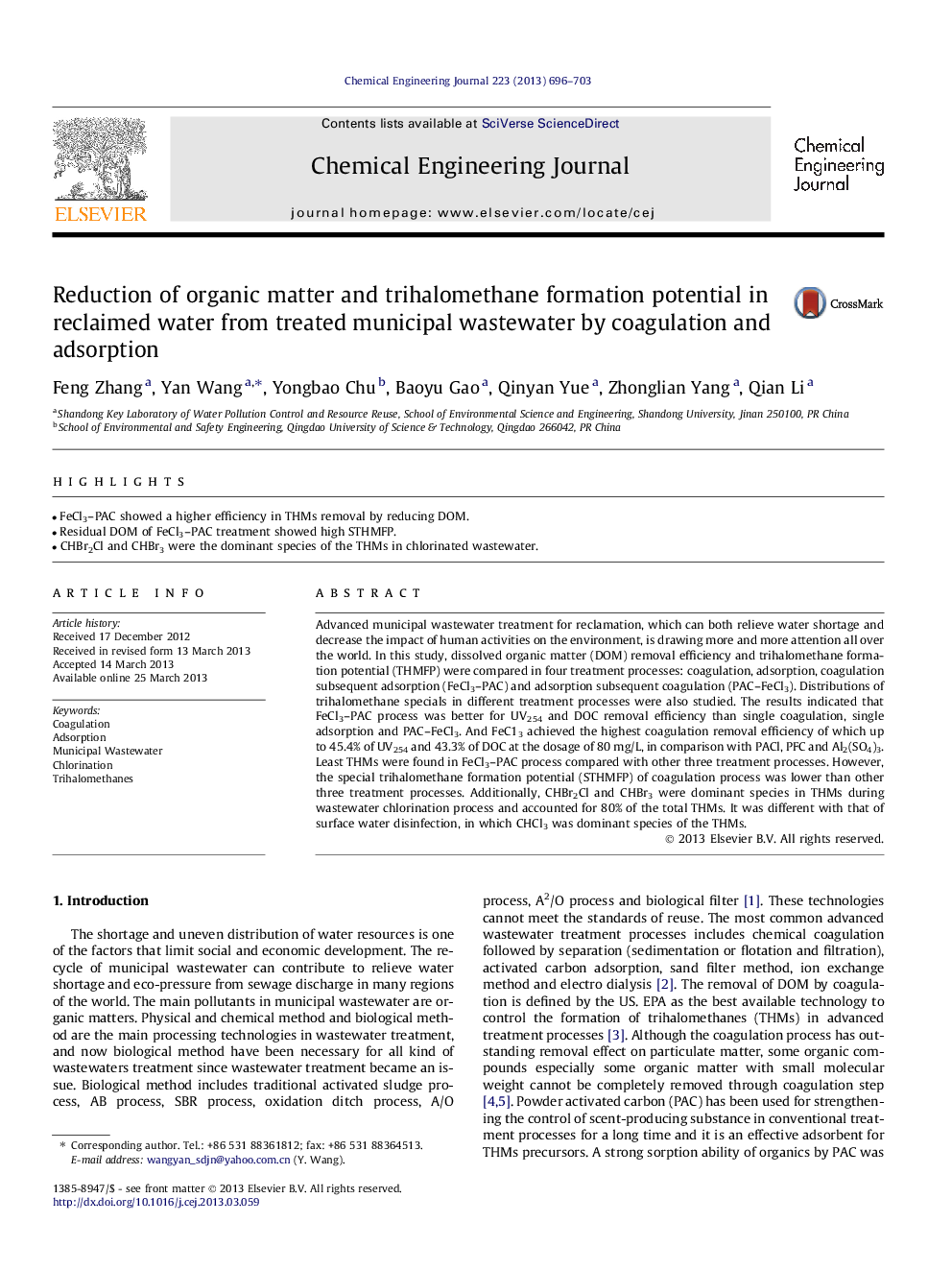| کد مقاله | کد نشریه | سال انتشار | مقاله انگلیسی | نسخه تمام متن |
|---|---|---|---|---|
| 6588049 | 456415 | 2013 | 8 صفحه PDF | دانلود رایگان |
عنوان انگلیسی مقاله ISI
Reduction of organic matter and trihalomethane formation potential in reclaimed water from treated municipal wastewater by coagulation and adsorption
ترجمه فارسی عنوان
کاهش ماده آلی و پتانسیل تشکیل تری هالومتان در آب تجدید شده از تصفیه خانه های تصفیه خانه توسط انعقاد و جذب
دانلود مقاله + سفارش ترجمه
دانلود مقاله ISI انگلیسی
رایگان برای ایرانیان
کلمات کلیدی
موضوعات مرتبط
مهندسی و علوم پایه
مهندسی شیمی
مهندسی شیمی (عمومی)
چکیده انگلیسی
Advanced municipal wastewater treatment for reclamation, which can both relieve water shortage and decrease the impact of human activities on the environment, is drawing more and more attention all over the world. In this study, dissolved organic matter (DOM) removal efficiency and trihalomethane formation potential (THMFP) were compared in four treatment processes: coagulation, adsorption, coagulation subsequent adsorption (FeCl3-PAC) and adsorption subsequent coagulation (PAC-FeCl3). Distributions of trihalomethane specials in different treatment processes were also studied. The results indicated that FeCl3-PAC process was better for UV254 and DOC removal efficiency than single coagulation, single adsorption and PAC-FeCl3. And FeC13 achieved the highest coagulation removal efficiency of which up to 45.4% of UV254 and 43.3% of DOC at the dosage of 80Â mg/L, in comparison with PACl, PFC and Al2(SO4)3. Least THMs were found in FeCl3-PAC process compared with other three treatment processes. However, the special trihalomethane formation potential (STHMFP) of coagulation process was lower than other three treatment processes. Additionally, CHBr2Cl and CHBr3 were dominant species in THMs during wastewater chlorination process and accounted for 80% of the total THMs. It was different with that of surface water disinfection, in which CHCl3 was dominant species of the THMs.
ناشر
Database: Elsevier - ScienceDirect (ساینس دایرکت)
Journal: Chemical Engineering Journal - Volume 223, 1 May 2013, Pages 696-703
Journal: Chemical Engineering Journal - Volume 223, 1 May 2013, Pages 696-703
نویسندگان
Feng Zhang, Yan Wang, Yongbao Chu, Baoyu Gao, Qinyan Yue, Zhonglian Yang, Qian Li,
